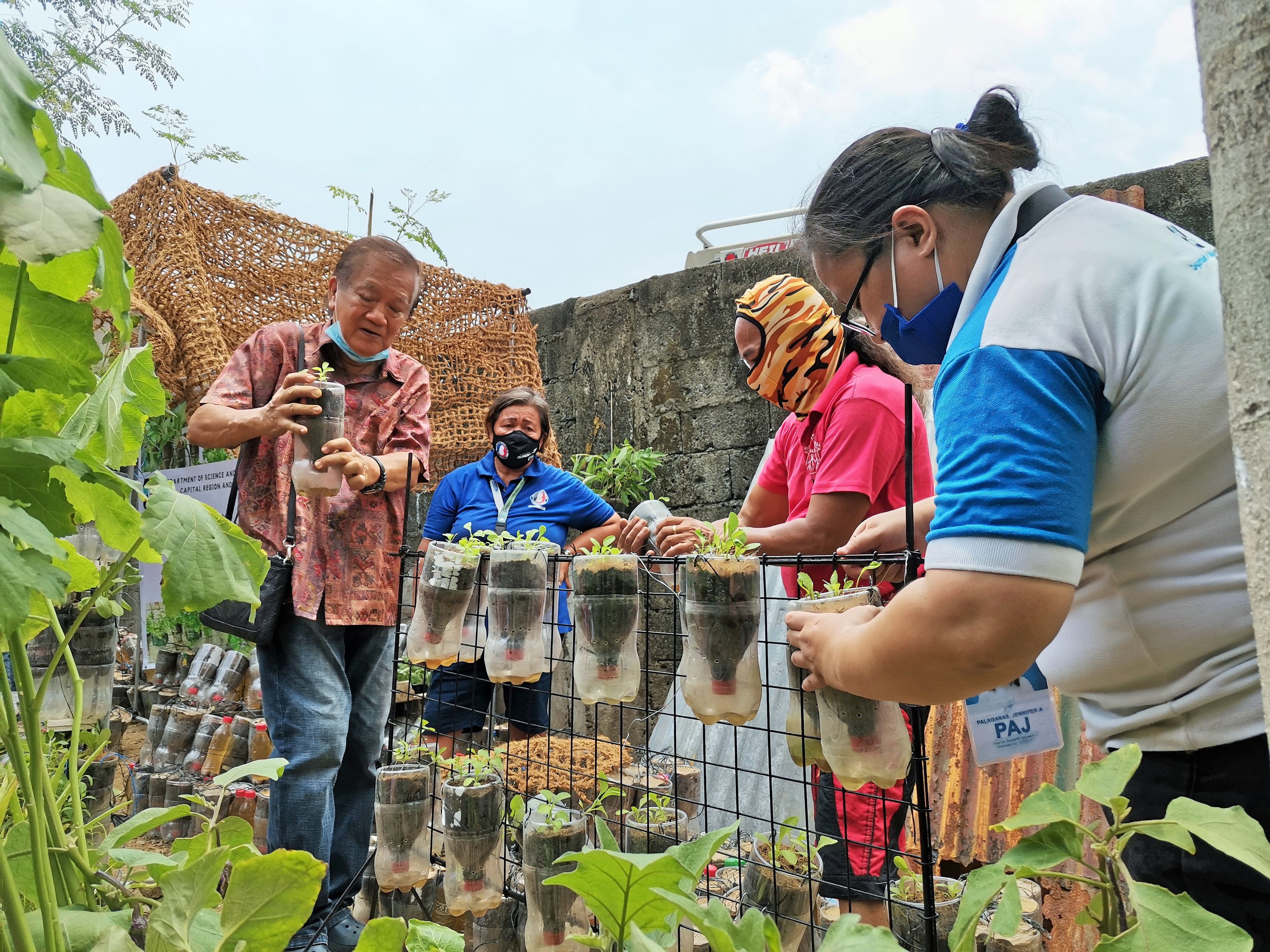 Gardening for food in the city where land and space are limited was once impossible to urban settlers. Now, urban gardening is gaining interest in the cities especially in Metro Manila.
Gardening for food in the city where land and space are limited was once impossible to urban settlers. Now, urban gardening is gaining interest in the cities especially in Metro Manila.
This interest to plant more has become a growing possibility for city dwellers. The COVID-19 lockdown periods have driven most of them to plant their own food at their own homes. Besides, government programs are pushing for urban gardening to address food security and nutritional well-being of the Filipinos.
Of the many technologies, vegetable urban gardening is the most feasible and adaptable for “stay at homes.” With the right production system, materials, and inputs, one can enjoy harvesting fresh clean, ready-to-cook veggies right at their own space. The households are not just the ones who can benefit; communities with idle lands can be converted into communal urban gardens and serve as a venue for hands-on trainings and seminars.
The GALING-PCAARRD Kontra COVID-19 program has “Gulayan sa Pamayanan” as one of its component projects. This project seeks to provide science and technology (S&T)-based livelihood on vegetable gardening in Metropolitan areas as a means to address concerns on food availability and accessibility.
Under this project, two urban gardening technologies are being initially adopted in Metro Manila. These are Enriched Potting Preparation (EPP) and Simple Nutrient Addition Program (SNAP) hydroponics technologies.
The Department of Science and Technology-National Capital Region (DOST-NCR) has already deployed EPP kits to selected barangays in Las Pinas, Paranaque, and Sampaloc, Manila. SNAP kits will soon be deployed also in these areas.
DOST-NCR implements the “Gulayan sa Pamayanan” project with monitoring guidance from DOST’s- Philippine Council for Agriculture, Aquatic and Natural Resources Research and Development through its Agricultural Resources Management Research Division (PCAARRD-ARMRD).
Enriched Potting Preparation
EPP production technology was developed by Dr. Eduardo P. Paningbatan, Jr., a retired Professor of the University of the Philippines Los Baños (UPLB). He formulated the Compost Soil Extract (CSE) nutrient solution. EPP technology uses compost, coco husk, CSE, and recyclable softdrink bottles as containers for the potting medium. According to Dr. Paningbatan, the EPP technology provides urban families with healthy and pesticide-free vegetables such as lettuce, “kangkong,” and tomato. It allows growing of herbs such as basil, oregano, and rosemary for food seasoning, health, and medicine and ornamentals such as Euphorbia, cactus, and daisy. EPP plants can be hung or set to a stand in places where there is available sunlight for at least three hours.
SNAP Hydroponics
 The SNAP package of technology and the nutrient solution was developed by Dr. Primitivo Jose A. Santos and Ms. Eureka Teresa M. Ocampo of the Institute of Plant Breeding-University of the Philippines Los Banos (IPB-UPLB).
The SNAP package of technology and the nutrient solution was developed by Dr. Primitivo Jose A. Santos and Ms. Eureka Teresa M. Ocampo of the Institute of Plant Breeding-University of the Philippines Los Banos (IPB-UPLB).
SNAP is a soilless vegetable production, which uses styrofoam boxes, styrofoam cups, growing media, and SNAP nutrient solution. According to IPB-UPLB, "SNAP hydroponics is best for home-based vegetable production and ideal for small spaces typical in urban areas. It is simple to set-up, maintain and operate since it only requires enough sunlight, air movement, and protection from rain. Aside from this, SNAP does not need electricity compared to other hydroponics system since it incorporates passive aeration of the nutrient solution used. SNAP hydroponics can be set up in green houses, terraces, and house awnings."
Both EPP and SNAP Hydroponics technologies for urban gardening are inexpensive as most of the materials needed to set up the system are recycled materials. They also require less manpower and less maintenance.
